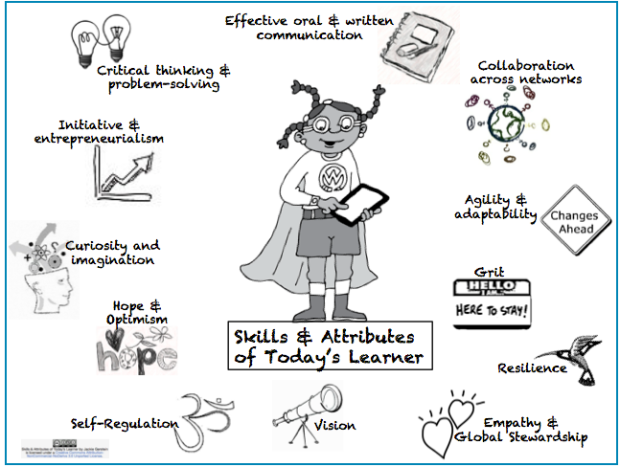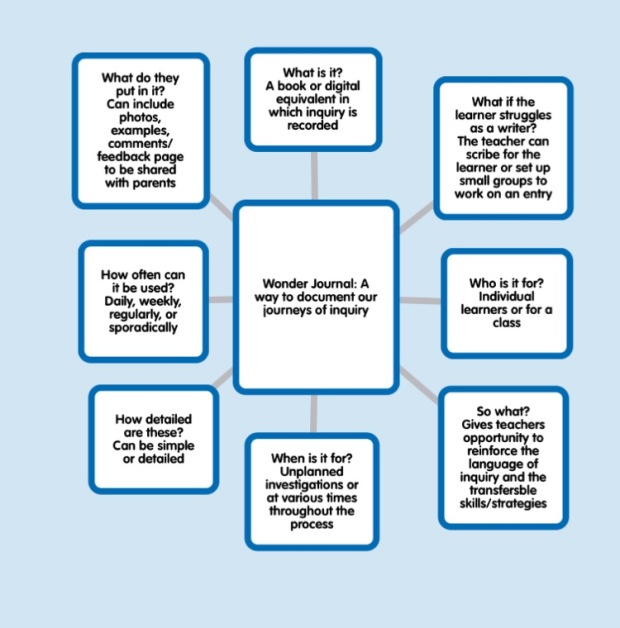Here is how you can scaffold the process if you have leaners who are new to inquiry, these are some ideas to help in Kindergarten-Grade 3 classrooms:
- Learners choose from teacher selected, concrete topics
- Learners begin work on the project by relating it to their personal experiences
- Teacher provides carefully selected resources, including internet sites, for learners
- Learners talk to others, using appropriate guidelines, to gather information about their topic
- Learners are taught skills for reading simple informational texts
- Learners are taught note-taking skills to record their information, using different graphic organizers that are provided by the teacher
- Learners begin to use technology to locate, organize and document learning
- Learners create a basic project based on specific guidelines
- Learners share their final project with small groups within the classroom (and/or their family)
- Learners talk about their feelings and progress each class through check ins
- Teacher identifies and shares evaluation criteria for the process and the product
- Learners can play a role in setting evaluation criteria for the process and the product
- Learners understand evaluation criteria for the process and product
- Teacher monitors progress at the end of each class
- Learners talk about what went well and what was challenging
What helps you scaffold an inquiry based environment?
-Kathleen










